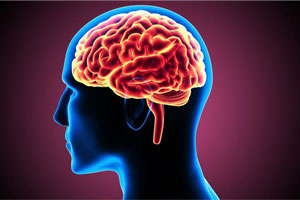- Home
- Editorial
- News
- Practice Guidelines
- Anesthesiology Guidelines
- Cancer Guidelines
- Cardiac Sciences Guidelines
- Critical Care Guidelines
- Dentistry Guidelines
- Dermatology Guidelines
- Diabetes and Endo Guidelines
- Diagnostics Guidelines
- ENT Guidelines
- Featured Practice Guidelines
- Gastroenterology Guidelines
- Geriatrics Guidelines
- Medicine Guidelines
- Nephrology Guidelines
- Neurosciences Guidelines
- Obs and Gynae Guidelines
- Ophthalmology Guidelines
- Orthopaedics Guidelines
- Paediatrics Guidelines
- Psychiatry Guidelines
- Pulmonology Guidelines
- Radiology Guidelines
- Surgery Guidelines
- Urology Guidelines
First Indian MRI atlas by IIIT researchers evaluates brain morphology of different populations

Hyderabad, India: Researchers from IIIT Hyderabad, India, have developed the first Indian brain MRI (magnetic resonance imaging) atlas of the young Indian population. A brain magnetic resonance imaging (MRI) atlas plays an important role in many neuroimage analysis tasks as it provides an atlas with a standard coordinate system which is needed for spatial normalization of a brain MRI. The study, published in the journal Neurology India revealed a significant difference in the shape and size of the brain between Indian, Chinese, and Caucasian populations.
According to the study, the average brain size of an Indian was smaller in height, width and volume in comparison to people of the Caucasian and eastern races. Findings may have implications for the treatment of neurological diseases including dementia, Alzheimer’s disease, Parkinson’s disease.
"A brain MRI plays an important role in many neuroimage analysis tasks as it provides an atlas with a standard coordinate system which is needed for spatial normalization of a brain MRI," the authors write in the journal. " Ideally, this atlas should be as near to the average brain of the population being studied as possible."
Jayanthi Sivaswamy, International Institute of Information Technology (IIIT), Hyderabad, Telangana, India, and colleagues aimed to construct and validate the Indian brain MRI atlas of young Indian population and the corresponding structure probability maps.
The researchers recruited 100 young healthy adults (M/F = 50/50), aged 21-30 years for the study. Three different 1.5-T scanners were used for image acquisition. The atlas and structure maps were created using nonrigid group-wise registration and label-transfer techniques.
The generated atlas was compared against other atlases to study the population-specific trends.
Key findings of the study include:
- The atlas-based comparison indicated a significant difference between the global size of Indian and Caucasian brains.
- This difference was noteworthy for all three global measures, namely, length, width, and height.
- Such a comparison with the Chinese and Korean brain templates indicate all 3 to be comparable in length but significantly different (smaller) in terms of height and width.
"The study is limited by the number of subjects (100) but the findings are compelling enough to motivate future work on building an atlas with a much larger as well as more heterogeneous mix set of subjects with a diverse set of education levels. The latter is reported to affect the brain anatomy," wrote the authors.
"The findings confirm that there is a significant difference in brain morphology between Indian, Chinese, and Caucasian populations," they concluded.
More Information: "Construction of Indian human brain atlas" published in the Neurology India journal.
Journal Information: Neurology India

Disclaimer: This site is primarily intended for healthcare professionals. Any content/information on this website does not replace the advice of medical and/or health professionals and should not be construed as medical/diagnostic advice/endorsement or prescription. Use of this site is subject to our terms of use, privacy policy, advertisement policy. © 2020 Minerva Medical Treatment Pvt Ltd